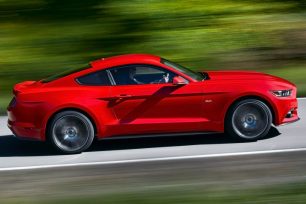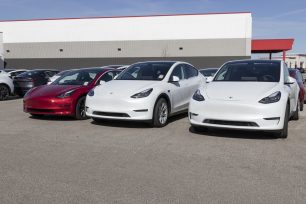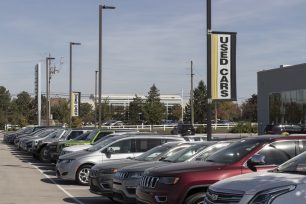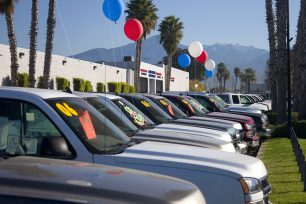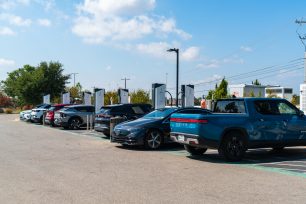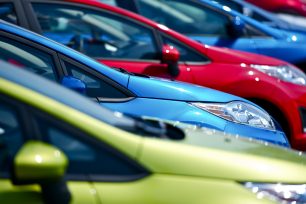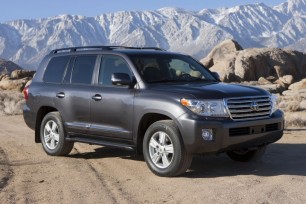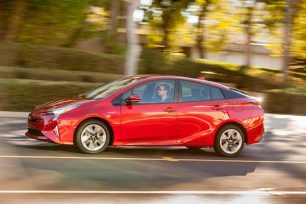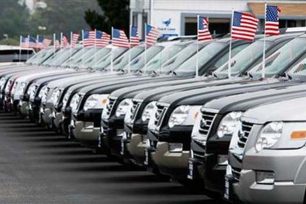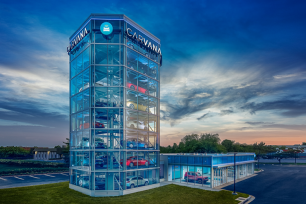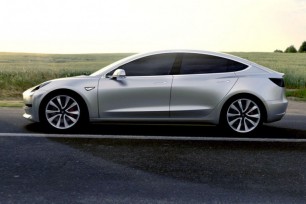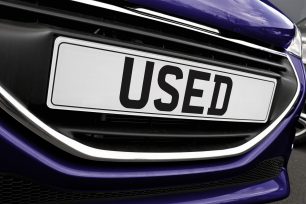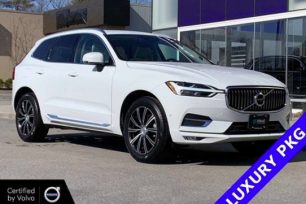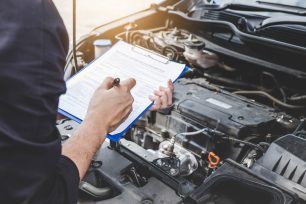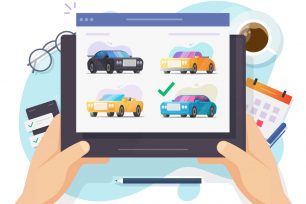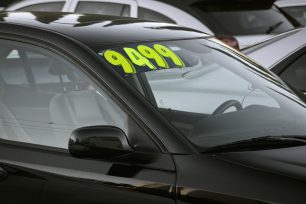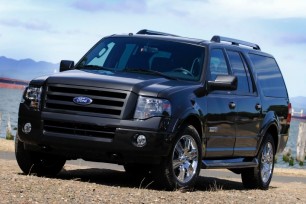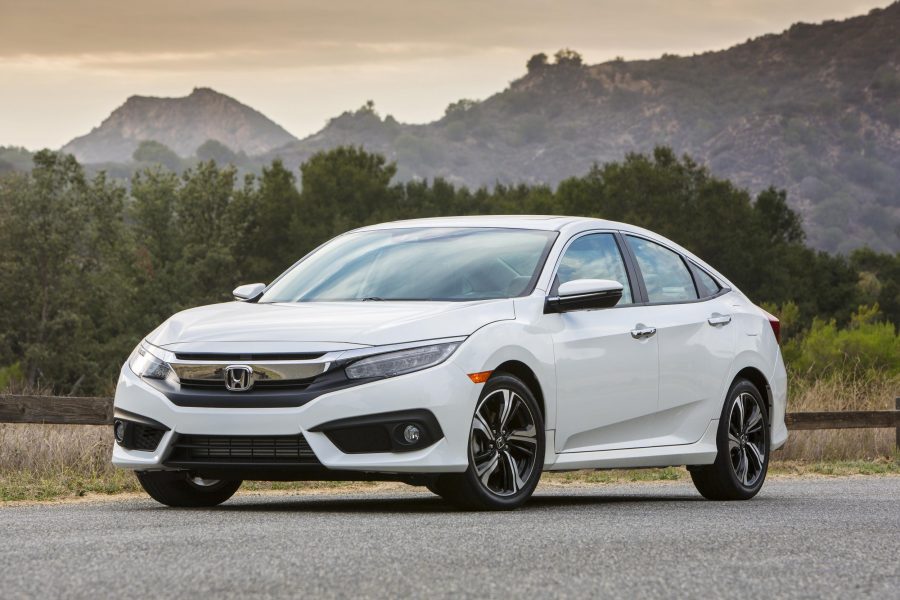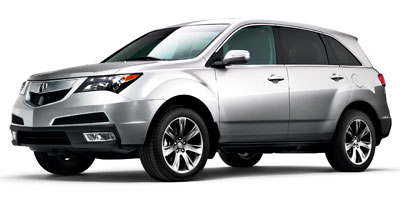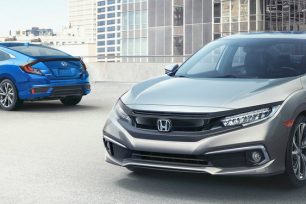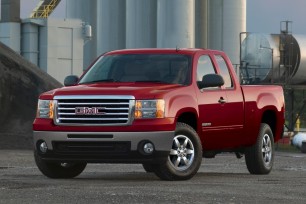We’ve all heard those typical dealership commercials advertising their latest financing specials. Sometimes they’re talking about buying, other times about lease deals - but in the end they want your money one way or the other. So which is better: leasing or buying?
Like anything as complex as buying a car, the answer is simple: it depends. Leasing and purchasing each have their pros and cons; depending on your circumstances, driving needs, and ownership plans, either option might be the better one for you.
To shed some more light on leasing and buying, we’ve gone ahead and hashed out some of their details and intricacies. Here’s some important traits of each that you’ll want to consider:
Leasing
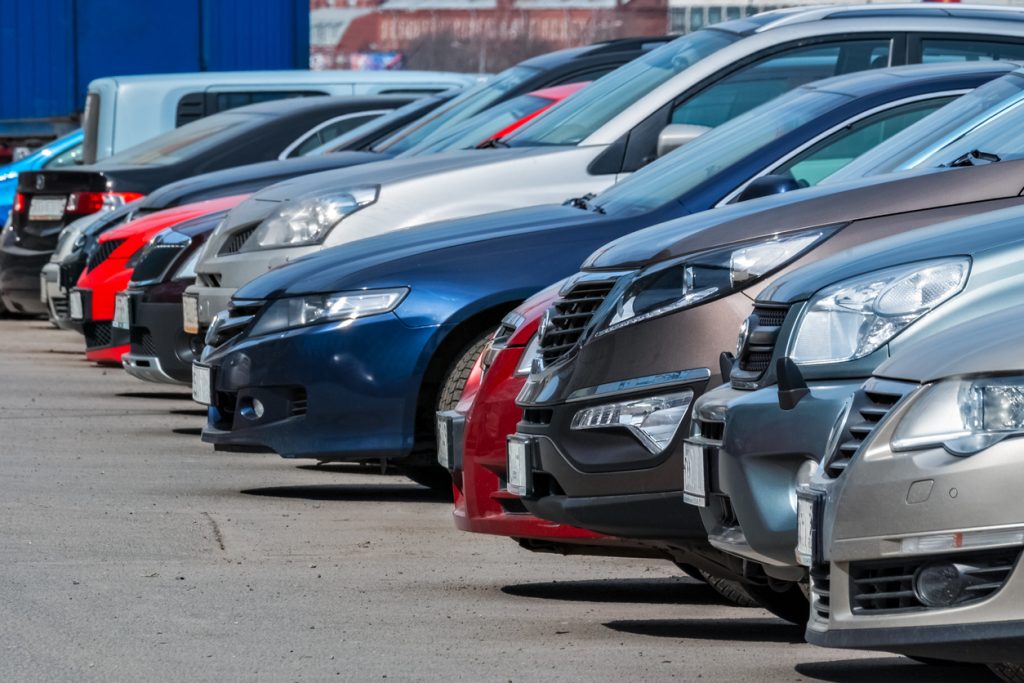
The more enticing - and certainly less understood - of the two options is the lease. On paper, it looks magical: affordable low monthly lease payments combined with the luxury of owning a new car. What’s not to like?
Well, the first thing to know is that you don’t really own the car at all. A leased car is more akin to a rental agreement than ownership: you pay an agreed-upon monthly fee for the right to drive that specific car. In two or three years - or whatever the duration of the lease is - you return the car to the dealer, at which point you will in all likelihood lease another new car and thus begin the process anew. You never own the car.
Cons of Leasing
Because you don’t own the car, you have to play by the rules of the lease. These rules could vary, but in nearly all instances they include annual mileage limits , commonly ranging between 12,000 and 15,000 miles a year. If you drive more than what you’re allotted, you’re on the hook for excessive mileage fees that usually cost anywhere from a few cents to as much as $0.25 per mile driven over the cap.A quick example: let’s say your lease agreement stipulates you won’t drive more than 15,000 miles a year. You end up driving 20,000 miles that first year, or 5,000 miles over the limit. Now let’s say the excessive mileage fee is $0.10 a mile. 5,000 multiplied by $0.10 is $500, which is the amount the leasing company will levy against you for that year.
Besides the mileage restrictions, leasing also disallows any sort of modification from stock and requires you to return the car at the end of the lease with no more than what’s called “ordinary wear and tear.” This is a rather subjective aspect, to be sure. But if your car picks up more than its fair share of dings, dents, scratches, and bruises over the term of the lease expect to pay a penalty at the end of your lease.
No Trade-in Value
And once you do finally return the car, that’s it - don’t expect a trade-in value or any other financial compensation. Because you are essentially renting the car, you don’t have any equity in the car as you would if you purchase it. That means your lease payments are much like any other rental payment - once you pay it, you aren’t getting it back, nor are you getting anything tangible in return.You also have to return the car at the end of the lease contract, no exceptions. Early termination of the lease is almost always going to trigger some hefty fees. You’ll need to keep the car for the entirety of the lease to avoid these fees.
Pay to Use, Not to Keep
So far, leasing sounds pretty onerous - mileage limits , wear and tear fees, and no equity to boot. But there are upsides, the biggest being those low monthly payments .If you lease, you’re only paying to use the car, not buy it, and so the monthly payment becomes a lot lower than it would be were you bringing home the car indefinitely. You’re essentially paying only enough to cover the depreciation hit that kicks in as soon as a new car drives off the lot and continues for the term of the lease. This is why those advertised payments you see on television or hear on the radio are so tantalizingly cheap - because you only pay to use, not to keep. Choosing a car with a high residual value, which is the car’s estimated value at the end of the lease, can help keep costs down. That’s because most of the car payment is depreciation, so a lower depreciating vehicle can mean lower monthly payments.
More Upfront Costs
Though the lease boasts lower monthly payments , the upfront cost is usually more than if you were purchasing. You might need to put down a larger down payment due to your credit score , and it’s likely that the dealership will want the first month’s payment to be included as well. Don’t discount the fact that other fees might also be added to the bottom line as well. It ultimately might make leasing look more expensive initially.Lower Down Payments, Lower Monthly Payments
You don’t need to finance a lease because you’re not buying the car - as long as you can afford the initial down payment and the recurring monthly payments you can swing a lease. This is vastly different than if you were to buy a new car . If you’re not looking to borrow from a bank and take on a loan, leasing is the way to go.You not only pay less money for a lease, you can also get a much nicer car for your money. To illustrate this, let’s say that hypothetically you’ve got $300 a month to spend on your car payment. If you were buying, your $300 payment could get you a new, base-model Hyundai Sonata, which stickers at $24,330 after all charges. Getting this Hyundai for $300 a month means putting down $4,500 and signing up for a 72-month financing term - just to be clear, that’s six years of paying $300 a month. These numbers assume you take Hyundai’s 2.9% financing rate and have a credit score of 700.
Now let’s consider what you can lease for $300 a month and $4,500 down. To keep things comparable, all of these lease prices were calculated using 12,000-mile yearly allowance and a 36-month lease term. Here’s a quick sampling of cars that would fit our hypothetical budget: Kia Telluride ($262/month); Acura TLX ($289/month); Volvo S60 ($279/month); Lexus IS 300 ($319/month); Chevrolet Blazer ($289/month).
Granted, all those but the Telluride come in around $300/month because of special offers available for a limited time. But that’s the thing about leases: if you shop smart and scout out the deals, you can lease a nicer car than you can afford to purchase, regardless of your price point.
Oh, and if you were to lease that Hyundai instead of purchase it? $178/month with that same $4,500 down payment and credit score of 700. That’s $122 less per month than if you bought it outright. The significantly lower monthly payments are another major reason people might lease rather than buy.
Also, a word about credit scores: they are critical to your ability to get good financing, regardless of whether you purchase or lease. A credit score is a measure of your ability to pay your debts in a timely fashion. It’s affected by numerous factors that can’t be delved into here. But suffice to say that if you want to qualify for all the lease or finance deals you hear about, you’ll need as good a credit score as possible. If your score isn’t so hot, the financial repercussions of buying or leasing a new car could be significant.
Buying

Buying a car outright was for a long time the only way to buy a car. Even buying a car in cash was once a relatively common occurrence. The times have changed since then, but you can still go out and buy a car that’s yours for as long as you please. The joys of ownership have their caveats, though.
Loans and Financing
The biggest drawback is that purchasing a new or used car requires having the money to buy it in the first place. As most people don’t have this kind of cash lying around, it’s necessary to get a car loan from either the financing arm of the manufacturer or through an independent financial institution.
An auto loan is much like any other loan: if your application looks good you’ll be granted the amount you applied for. You’ll pay the lender back with interest, which is denoted as APR - the annualized percentage rate. It’s the interest rate as annualized over the year for each year the loan is outstanding.
Once you have your loan, you’ll take the proceeds and pay the dealership for your new vehicle. At this point the owner of the car is the financial institution, not you. You won’t own the car until you pay back the loan in full, plus interest. The car is essentially collateral for the loan.
You’ll need to pay back whatever it is you were loaned over the duration of the loan term, which is usually anywhere from 36 to 72 months. During that time the car continues to depreciate in value: your new ride quickly becomes a used car and the market values it as such.
If you stretch out your loan payments for too long - think back to the six-year financing term for that Hyundai we discussed - you run the risk of being underwater, which is when the market value of the car is less than the remaining balance on the loan. At that point you’re paying too much for a car that isn’t even yours.
Keeping a close eye on the interest rate accompanying your loan is also important. Even a half a percentage point can make a material difference in the total amount paid over the course of a loan. Getting saddled with a high interest rate can actually means you might ultimately pay more than the car stickered by the time you’ve repaid your loan.
No Endless Monthly Payments
That last section might sound all doom and gloom, but if you’re smart about financing, you can get a shorter-term loan and have a few happy years without any sort of monthly payment . This means that you’ll need to keep the car for a long time, though - six or eight years or more. It also means you paid your loan back in four to six years or less.Having a short-term loan requires higher monthly payments, but also means no payments at all for some duration of time. Depending on your circumstances, this could be ideal over the endless payment cycle that comes with leasing.
Additional Maintenance Costs
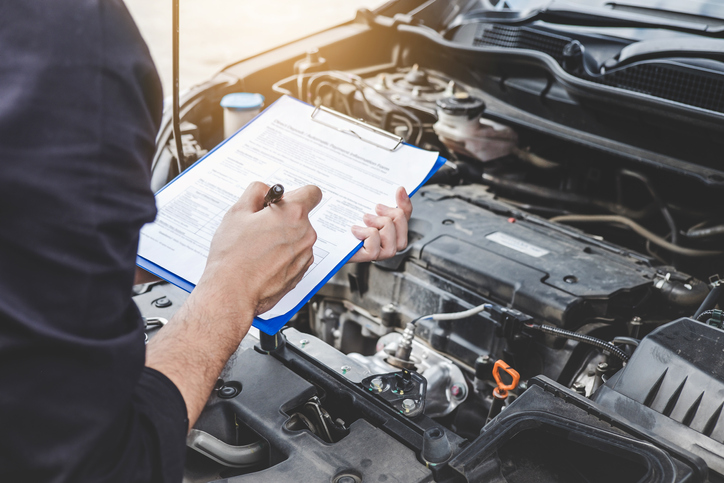 Services car engine machine concept, Automobile mechanic repairman checking a car engine with inspecting writing to the clipboard the checklist for repair machine, car service and maintenance.
Services car engine machine concept, Automobile mechanic repairman checking a car engine with inspecting writing to the clipboard the checklist for repair machine, car service and maintenance.
When you own a car, you’ll also have to consider something rarely thought about with leasing: the hassle of maintenance. In a lease, you own the car for such a brief duration of time - two or three years - that you hardly need to change the oil more than a handful of times before you trade it for another leased vehicle. If anything serious does go wrong with your lease, the failure will almost certainly be covered by a factory warranty.
That’s not the case when you buy a car; at some point the warranty will end and you’ll be on your own for repairs and maintenance that comes up. For the first few years of a car’s life, this isn’t an issue, but as it gets older it will need more upkeep and more regular maintenance. Expect to budget for unforeseen repair costs when the warranty runs out.
Outright Ownership
For all the financial drawbacks of buying a car, at the end of the day you still own a car. The car is yours to do as you please. Customize it, drive it a million miles, keep it pristine or flaunt its imperfections - you can do all of that with a car you buy. There’s no mileage limits , no stipulation you return it sterile and unmodified, no other limitations. It’s your car, plain and simple.Because it’s yours outright, you also can take advantage of the resale value when it comes time to buy a new one. Even an older used car can be worth anywhere from a few thousand dollars to the price of some low-end new cars. Come trade-in time, you’ll reap the benefits of ownership when you see thousands of dollars lopped off the bottom-line price for your next car.
Cheaper Auto Insurance
Another perk to buying versus leasing is the lower car insurance rates that come with ownership. Auto insurers make the assumption that an actual owner will be someone more diligent and caring than a leaseholder who knows that in three years they’ll be driving something new. Insurance rates reflect this line of thinking.Gap insurance is something to consider as well. It covers the difference between the value of the car and the amount owed on it. If you total your new car when its still nearly new, the initial depreciation hit might mean the insurance payout won’t cover the amount you owe on it. Gap insurance covers the potential gap between what you owe and what the standard auto insurance pays out.
This insurance is a good idea for those getting loans but not usually required; however, it is often mandatory with leases. This is because even if your leased car is totaled you’re still on the hook for the payments; gap insurance ensures you’ll have enough to pay what you contracted in a lump sum in the event the car is totaled.
Leasing Vs Buying: The Bottom Line
Buying or leasing are both viable options to get into a new car . Generally, if you have good credit, don’t want to own a car for more than four years, and don’t drive more than 15,000 miles per year, leasing could be your best option. This route avoids maintenance costs and the need to take out a loan, and if done right usually ends with lower monthly payments and lower total cost.On the other hand, if you put on a lot of miles on your vehicle each year, want to customize your car, or plan on keeping it for years, purchasing is the better bet. Sure, you’ll spend more money per month on the payment, but at the end of the day, you’ll have a car that’s yours to do as you please and trade in at will.
For all their differences, leasing and buying have at least this in common: they’re both complicated. The only way to know what’s right for you is to weigh both options, run the numbers, and do your research. Only then will you walk into the dealership confident and ready to negotiate a car lease or purchase price.
If you’re ready to start the car buying process, you can search over 4 million new and used cars with the iSeeCars.com search engine that helps shoppers find the best car deals by providing key insights and valuable resources, like the iSeeCars free VIN check.


